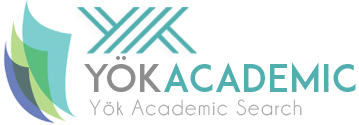Research Article
Book Reviews
Issue Editorial Board
Prof. Dr. Ayşin Satan completed her undergraduate education in Educational Sciences (1992), her master's degree in Guidance and Psychological Counseling (1997) and doctorate (2006) at Marmara University. She was appointed to Marmara University, Atatürk Faculty of Education, Department of Educational Sciences as an Assistant Professor in 2011. Satan, who became an Associate Professor in 2013, became a Professor in the field of Guidance and Psychological Counseling in 2022. Prof. Satan currently works for Marmara University, Atatürk Faculty of Education, Department of Educational Sciences. Prof. Satan has many articles published in journals indexed in national and international directories. Prof. Satan's research areas include psychological counseling and guidance education.
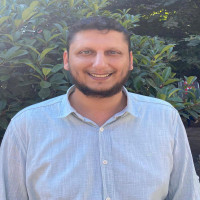

Prof. Dr. Eyüp Sevimli completed his undergraduate education in the Department of Secondary Science and Mathematics Education at Balıkesir University (2007) and his master's degree (2009) and doctorate (2013) in Mathematics Teaching at Marmara University. He received the title of Professor in Mathematics and Science Education in 2023. Prof. Sevimli currently works at Istanbul Medeniyet University, Faculty of Educational Sciences, Department of Mathematics and Science Education. Prof. Sevimli has many articles published in journals indexed in national and international directories. Prof. Sevimli's research areas include mathematics education.
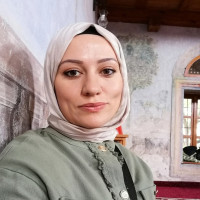
Fatma Kevser Sümer graduated from Selçuk University, Department of Turkish Language and Literature (2010), and completed her master's degree in Educational Sciences at the same university in 2011. She is currently studying a master's degree in Media and Cultural Studies at Üsküdar University. Sümer was appointed as a teacher at Kâğıthane Anadolu Imam Hatip High School in 2013 and has held various positions at the Istanbul Provincial Directorate of National Education. These positions include membership in the Evaluation Commission, authorship in the Primary Education Textbook Writing Commission, editorship at the Teachers' Academy Journal Workshop and Istanbul Journal, editorship of the R&D Bulletin, coordination of the "Reading Istanbul" Project, and coordination of the Press and Public Relations Branch. She also served as the broadcast coordinator for "From Us" and "Teachers' Lounge" on TRT EBA TV, and hosted the family program "Maaile" on Mavera TV. Currently working for the Press and Public Relations Unit of the Istanbul Provincial Directorate of National Education, Sümer contributes to national and literary journals and is a member of the Board of Directors of the Istanbul Branch of the Turkish Writers Association.
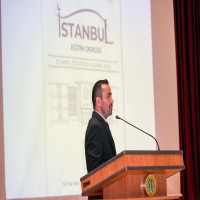

Assoc. Prof. Nurhüda Sözen completed her undergraduate education in classroom teaching at Dicle University (2004). She worked as a teacher in public schools affiliated with the Ministry of National Education. After publishing her master's thesis titled "Use of Logic in Children Between the Ages of 9-11" in the Logic Department of the Social Sciences Institute at Dicle University, she started her doctorate education in the Classroom Education Department of the Educational Sciences Institute at Gazi University. She completed her doctorate education with her thesis titled "The Effect of Guided Reading Method on the Development of Comprehension Skills of Students with Reading Difficulty" (2017). Assoc. Prof. Sözen's research areas include the professional development and support education needs of teachers, the education of students coming through migration, education during epidemic and earthquake processes in the context of 21st century problems, and the development of reading skills with reading strategies.

Nuriye Erzen completed her undergraduate education in English language teaching at Yıldız Technical University, Faculty of Education (2012). She worked as an English teacher at kindergarten, primary school, secondary school, and high school levels in public and private schools affiliated with the Ministry of National Education. During her university years, she worked as a volunteer English teacher and translator for various non-governmental organizations. He represented his institutions as a coordinator and partner in E-Twinning and Erasmus+ projects. She presented papers at various conferences and symposiums organized by the Board of Education and Discipline and universities. She is currently working as an English teacher at the Istanbul Ticaret Odası Secondary School. Her research areas include educational sciences, the use of digital tools in education, teaching foreign languages to children, and current approaches to teaching foreign languages.

Doç. Dr. Osman Özdemir, Selçuk Üniversitesi’nde öğretim üyesi olarak görev yapmaktadır. Lisans eğitimini İngiliz Dili Eğitimi alanında tamamlamış, yüksek lisansını İngiliz Dili Eğitimi, doktorasını ise Eğitim Programları ve Öğretim alanında yapmıştır. 2025 yılında Doçent unvanını almıştır. Akademik ilgi alanları arasında yabancı dil öğretimi, öğretmen yetiştirme, eğitim programları ve öğretim tasarımı, dijital okuryazarlık ve yapay zekâ destekli eğitim uygulamaları yer almaktadır. Özdemir, ulusal ve uluslararası hakemli dergilerde yayımlanmış makaleleri ve çeşitli kongrelerde sunulmuş bildirileriyle alana katkı sunmaktadır.
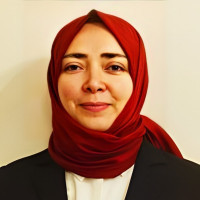
Sümeyra Uzun, who completed her undergraduate education at Marmara University, Department of Theology and Boğaziçi University, Department of Preschool Teaching, completed her master's degree at Istanbul University, Department of Religious Culture Education, with a thesis she wrote on the theme of Comparative Education (Early Childhood Religious Education). Uzun did his doctoral study in religious education on Program Development in Early Childhood Religious Education. Uzun has national and international publications, articles, research, and book chapters on program development, integrated education programs, and religious development theories in early childhood religious education. She has worked as a teacher and administrator in schools within the Ministry of National Education since 2011. Sümeyra Uzun has supported educational research within the Institute Social as of August 2023.
Sümeyye Paşo completed her undergraduate education in Computer and Educational Technologies Teaching at Fırat University, Faculty of Education (2008). In the same year, she was appointed as an Information Technologies and Software Teacher to a school affiliated with the Ministry of National Education. Sümeyye Paşo has worked as a coordinator (Tübitak-Erasmus+) in various national and international projects.

Dr. Zeynep Büyükünal was born in Ankara in 1979. She completed his undergraduate education at Selçuk University, Faculty of Education, Department of English Language Teaching. She has been working as an English teacher at the Ministry of National Education since 2001. She continued her studies in the field of Mevlana and Sufism, which she started with Mesnevi, at Selçuk University. She completed her master's degree at the Institute of Social Sciences, Department of Philosophy and Religious Sciences, Department of Islamic Philosophy with her thesis titled 'The Concept of Love in Mevlana's Mesnevi' and her doctorate with her thesis titled 'Symbolism in Mevlana's Sufi Philosophy'. She presented papers on her field of study at international symposiums and conferences. She wrote essays on various subjects and these were published in various magazines and websites. She conducted the 'Mesnevi Readings' workshop within the scope of Istanbul Teacher Academies. She writes symbolic stories related to values education for children and continues her studies in the field of Sufism and Islamic thought.

Assoc. Prof. İbrahim Limon currently works as an English teacher at Mithatpaşa Anatolian High School, Sakarya. He previously worked as a partime lecturer at Medipol University, Haliç University and Sakarya University. He graduated from Bosphorus University, Educational Faculty. He got his master's degree in Educational Administration and Supervision at Sakarya University and Phd degree in the same field at Abant İzzet Baysal University in 2019. His doctoral thesis was on teachers’ change fatigue, demoralization, and job performance. He published several articles in both national and international journals. Assoc. Prof. Limon developed and adapted scales into Turkish. He presented many papers at conferences and edited an international book in English. His research areas are school leadership, organizational behavior, and educational change. He is the language editor of an international journal and among the editorial team of national ones. Assoc. Prof. Limon is one of the organizing committee members of an international conference held in different countries for the past few years.
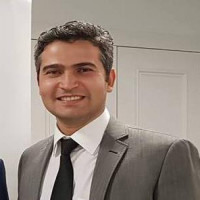
Dr. İsmail Tonbuloğlu completed his undergraduate studies in Computer and Instructional Technologies Education (2008), his master's degree in Computer and Instructional Technologies Teaching (2010) at Marmara University, and his doctorate in the same field at Sakarya University (2017). He was appointed to Marmara University, Atatürk Faculty of Education, Department of Computer and Instructional Technologies Education as an Associate Professor in 2024. Dr. Tonbuloğlu currently works for Marmara University, Atatürk Faculty of Education, Department of Computer and Instructional Technologies Education. Dr. Tonbuloğlu has many articles published in journals indexed in national and international directories. Dr. Tonbuloğlu's research areas include educational technology and computing, teacher education and professional development of educators.
Issue Reviewers

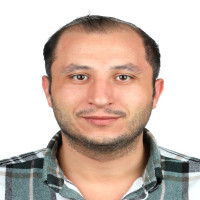
Azmi Çağlar 1990 Bolu-Yeniçağa doğumludur. İlk ve orta öğretimini Bolu-Yeniçağa’da tamamlamıştır. Lisans öğrenim hayatını Kuzey Kıbrıs Türk Cumhuriyeti’nde bulunan Doğu Akdeniz Üniversitesi Eğitim Fakültesi Rehberlik ve Psikolojik Danışmanlık programından 2012 yılında mezun olarak tamamlamıştır. 2016 yılında İstanbul Sabahattin Zaim Üniversitesi Sosyal Bilimler Enstitüsü Rehberlik ve Psikolojik Danışmanlık bilim dalında başladığı yüksek lisans eğitimini 2018 yılında tamamlamıştır. 2019 yılında ise Yıldız Teknik Üniversitesi Sosyal Bilimler Enstitüsü Rehberlik ve Psikolojik Danışmanlık alanında doktora eğitimine başlayan Çağlar, 2023 yılında mezun olarak rehberlik ve psikolojik danışma alanında bilim doktoru olmuştur. 2012 yılında Milli Eğitim Bakanlığı’na bağlı olarak yapmaya başladığı okul psikolojik danışmanlığı görevini 2023 yılına kadar sürdürmüştür. Şu an Abant İzzet Baysal Üniversitesi Eğitim Fakültesi Eğitim Bilimleri Bölümü Rehberlik ve Psikolojik Danışmanlık Anabilim Dalında öğretim üyesi olarak görev yapmaktadır.
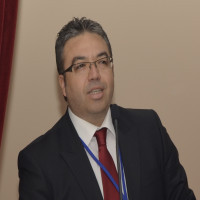

Dr. M. Kart was born in 1984 in Konya, Turkey. He completed his primary, secondary, and high school education in Manisa. In 2006, he graduated from the Faculty of Education at Niğde Ömer Halisdemir University, specialising in Primary School Teaching. Between 2006 and 2019, he served as a teacher and administrator under the Ministry of National Education. In 2017, he completed his master’s degree in Curriculum and Instruction at the Institute of Social Sciences, Kırşehir Ahi Evran University. In 2022, he earned his doctoral degree from the same department and institution.
Dr. Kart began his academic career in 2019 as a lecturer at Kırşehir Ahi Evran University, where he continues to serve as an Assistant Professor in the Department of Child Development at the Faculty of Health Sciences.
His academic contributions focus on values education, multicultural education, inclusive practices, and curriculum development. His studies on Ahi culture provide valuable insights into the integration of ethical principles into modern education systems. He also conducts research on the education of children with special needs and the challenges faced by their families. Dr. Kart has published numerous articles, book chapters, and books, offering both theoretical and practical solutions to contemporary educational challenges.

Okan DEDE is currently working as an instructor at Karabuk University, Turkey. He holds an MSc. degree in Curriculum and Instruction Program and a Bachelor’s degree in English Language Teaching. His research interests include accreditation in teacher education and autonomy in learning processes. He holds a a Ph.D. egree in Curriculum and Instruction Program.



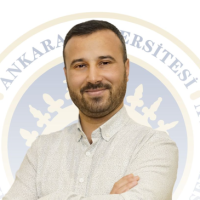

Adı Soyadı: Vedat AKTEPE
Doğum Yeri: Kozaklı
Doğum Yılı: 21.06.1970
Unvanı: Doçent Doktor
Görev Yeri: Nevşehir Hacı Bektaş Veli Üniversitesi, Eğitim Fakültesi, Temel Eğitim Bölümü
Uzmanlık Alanı: Temel Eğitim, Sosyal Bilgiler Eğitimi, Hayat Bilgisi Öğretimi, Değerler Eğitimi
Nevşehir’in Kozaklı ilçesinde 1970 yılında doğdum. İlkokulu ve ortaokulu Kozaklı Kalecik İlkokulu ve ortaokulunda, liseyi Kayseri Lisesi’nde, üniversite lisans öğrenimini Gazi Üniversitesi Kırşehir Eğitim Fakültesi’nde tamamladım. Sınıf öğretmenliğine 1994 yılında Amasya ili Taşova Aşağı Baraklı İlköğretim Okulu’nda başladı. Yozgat Şefaatli Kuzayca İlköğretim Okulu ve Kırşehir Kaman Kurancılı İlköğretim Okulu’nda sınıf öğretmenliği yaptım. 2003 yılında okul müdürlüğü sınavlarını kazanarak Kırşehir ili Akçakent Şeyh Şamil İlköğretim Okulu ve Mucur Kurugöl Mehmet Akif Ersoy İlköğretim Okulu müdürlüğü görevlerinde bulundum. 2004 yılında Selçuk Üniversitesi, Sosyal Bilimler Enstitüsü Eğitim Bilimleri Bölümünde yüksek lisans programından mezun olarak “Bilim uzmanı” ünvanı aldım. 2010 yılında Gazi Üniversitesi, Eğitim Bilimleri Enstitüsü İlköğretim Bölümü Sınıf Öğretmenliği Ana Bilim Dalından mezun olarak “Doktor” ünvanını aldım. 2012 yılında Nevşehir Hacı Bektaş Veli Üniversitesi Eğitim Fakültesi İlköğretim Bölümü Sınıf Öğretmenliği Ana Bilim Dalında Yrd. Doç. Dr. olarak göreve başladım. 2018 yılından itibaren ise, aynı üniversitenin Temel Eğitim Bölümü Sınıf Eğitimi Ana Bilim Dalında “Doçent” ünvanımı aldım. Temel Eğitim, sosyal bilgiler eğitimi, hayat bilgisi öğretimi, değerler eğitimi ve öğretmen yetiştirme alanlarında kitap editörlüğü, dergi editörlüğü, kitap bölümü, makale ve bildirilerim bulunmaktadır.

Dr. Yasemin YEŞİLBAŞ ÖZENÇ completed her PhD in Educational Administration at Aydın Adnan Menderes University. Dr. Yeşilbaş Özenç has been the editor of the International Journal of the Pursuit of Excellence in Interdisciplinary (IJPEl) since 2022. Dr. Yeşilbaş Özenç's research interests include culture, social network analysis, comparative education and lifelong learning.
Aim & Scope
Istanbul Education Journal (ISTJ)
"Know the past, understand the present, prepare for the future!"
ISSN: 3023-7645 e-ISSN: 3062-1534
Subject Category: Education
Subheadings:
Educational Programs and Instruction: Values Education, Readiness in Education, Program Evaluation in Education, Program Development in Education, Philosophical and Social Foundations of Education, Psychological Foundations of Education, Lifelong Learning, In-Service Education, Informal Learning, Comparative and Intercultural Education, Out-of-School Learning, Program Design, Adult Education, Multicultural Education, Learning Theories, Instructional Theories, Instructional Design, Instructional Technologies, Teacher Education and Professional Development of Educators, Curriculum and Instruction (Other)
Educational Management, Inspection, Planning and Economics: Educational Planning, Educational Management, Educational Supervision, Educational Leadership, Inspection and Planning, Educational Management, Inspection, Planning and Economics (Other)
Studies on Education: Educational Policy, Educational Technology and Computing, Inclusive Education, Learning Analytics, Learning Sciences, Teacher and Student Wellbeing, Studies on Education (Other)
Measurement and Evaluation in Education: Measurement Theories and Applications in Education and Psychology, Intercultural Comparisons of Education: International Exams, Intercultural Scale Adaptation, Classroom Measurement Applications, National and International Achievement Comparisons, Scale Development, Measurement and Evaluation in Education (Other)
Science and Mathematics Fields Education: Biology Education, Science Education, Physics Education, Chemistry Education, Mathematics Education, STEM Education, Science and Mathematics Fields Education (Other)
Vocational Education and Training: Vocational Education, Vocational Education and Training (Other)
Guidance and Psychological Counseling: Career Counselling, School Psychological Counselling, Psychological Counseling Training, Guidance and Psychological Counseling (Other)
Art Education: Fine Arts Education, Media and Communication Education, Museum Education, Creative Drama Education, Art Education (Other)
Basic Education: Preschool Education, Classroom Education, Primary Education, Basic Education (Other)
Turkish and Social Sciences Education: Geography Education, Religious Education, Philosophy Education, Psychology Education, Social Studies Education, Sociology Education, History Education, Turkish Language and Literature Education, Turkish Education, Turkish and Social Sciences Education (Other)
Special Education and Disabled Education: Visually Impaired Education, Speech Impaired Education, Autistic Children Education, Autism and Spectrum Disorder Education, Mental Disability Education, Multiple Disability Education, Special Talented Education, Hearing Impaired Education, Special Education and Disabled Education (Other)
Author Guidelines
Main Sections of an Article
In the ethical statement section, authors must state they have followed all ethical rules while conducting the study. If artificial intelligence technologies had been used in preparing the study, it must be clearly stated which functions of these technologies have been used, at which stages of the research, and to what extent. If the article is presented as a part of a master's thesis, doctoral thesis, or a different comprehensive research/project, the title of the relevant thesis/research/project must also be stated. It must be stated whether article has previously been submitted to congresses, symposiums, etc. (see ISTJ Article Writing Template page 9-10-11). The ISTJ Ethical Statement Form signed by authors must be added to the ISTJ process file. Click for the ISTJ Ethical Statement Form.
Ethics Committee Approval
The ethics committee approval section must provide necessary information regarding the ethics committee's decision on the article (e.g., the date and number of the document and the university to which the ethics committee is affiliated). The original document must be added to the ISTJ process file (see ISTJ Article Writing Template page 11).
If the ethics committee approval is not required for the article, the reason for this must be clearly stated in this section. In addition, the author must sign the ISTJ Statement of No Need for Ethics Committee Approval Form, which confirms that the article does not require the ethics committee approval. Click for the ISTJ Statement of No Need for Ethics Committee Approval Form.
Conflict of Interest Statement
In the conflict of interest section, authors must state that they do not have any conflict of interest among themselves. However, it must be stated in this section that there is no situation affecting the objectivity of the author(s) in favor of or against any person or institution (see ISTJ Article Writing Template page 11). The ISTJ Conflict of Interest Statement Form signed by author(s) must be added to the ISTJ process file. Click for the ISTJ Conflict of Interest Statement Form.
Author Contribution Statement
In an article with more than one author, all the authors must transparently state the extent of their support for the article (see ISTJ Article Writing Template page 12). The ISTJ Author Contribution Statement Form signed by authors must be added to the ISTJ process file. Click for the ISTJ Author Contribution Statement Form.
Statement of Support and Acknowledgment
In the Support and Acknowledgment section, if the article is supported by an institution (BAP Project, TÜBİTAK Project, etc.), the project's name, project number, and completion date must be written. If the article does not contain any support or acknowledgment institution, person, etc., "We do not express any support or acknowledgment for our research." must be written (see ISTJ Article Writing Template page 13).
Article Types
Article Formatting
Ethical Principles and Publication Policy
ISTJ Ethical Principles
Ethical Principles and Responsibilities for the ISTJ Authors
Authors who submit articles to ISTJ are expected to comply with the following ethical principles and responsibilities:
1.All the article data submitted by authors to ISTJ for review must be accurate and original.
2.Authors must fully and accurately cite their references in the article. All the responsibility for similarity belongs to the authors. Authors must know the rules of citation and comply with these rules (see APA 7 reference indication). Even if the similarity rate is 1%, plagiarism may occur if the authors do not obey the citation rules. Therefore, citation rules must be known by authors and applied carefully. If any plagiarism is detected, the article will be rejected. ISTJ reserves the right to apply additional sanctions for plagiarized authors and articles.
3.The article submitted to ISTJ for the publication must not have been previously published or submitted for publication elsewhere.
4.Since authors cannot submit their articles to more than one journal's application process at the same time, each application must be started after the previous one is completed.
5.The studies previously presented at congresses and symposiums and only the published abstract may be accepted to ISTJ, provided that this is stated.
6.If the article is presented as part of a master's thesis, doctoral thesis, or other comprehensive research projects, the title of the relevant thesis/research/project must also be stated.
8.When authors are requested to provide raw data regarding their articles within the review process, the relevant data must be forwarded to editors or referees.
9.Authors cannot withdraw their articles that have been successfully peer-reviewed and queued for publication without a valid excuse.
11.No copyright is paid to the article sent to ISTJ. The copyright of the published article belong to the author. Authors authorize ISTJ to publish the article and identify it as the original publisher. Authors grant any third party the right to freely use the article if original authors and citation details are identified. The signed ISTJ Copyright Agreement Form must be added to the ISTJ process file. Click for the ISTJ Copyright Agreement Form.
14.In conflict of interest section, authors must state that they do not have any conflict of interest among themselves and that no situation affects their objectivity for or against any person or institution. The signed ISTJ Conflict of Interest Statement Form must be added to the ISTJ process file. Click for the ISTJ Conflict of Interest Statement Form.
15.In studies with more than one author, authors must transparently state the extent of their support for the article. Contributing to the conception, design, analysis and interpretation of the article; providing support to the article not only in terms of spelling and grammar, but also in terms of intellectual and academic content, and finalizing the article before sending it for review are prerequisites that an author must fulfill in order to be written as an author of the article. The names of those who do not meet one or more of these conditions must not be written as authors in the article. Individuals or institutions that provided technical support, data collection assistance, or funding to the study, but who do not fully meet the authorship criteria, may be included in the "Acknowledgements" section. The signed Author Contribution Statement Form must be added to the ISTJ process file. Click for the ISTJ Author Contribution Statement Form.
Salami Slicing: Publishing a comprehensive study by artificially dividing it into multiple smaller articles.
Simultaneous Submission: Sending the same article to more than one journal for reviewing at the same time.
Fabrication: Producing and reporting non-existent data or results.
Falsification: Manipulating research materials or processes or distorting the research record by changing or omitting research data or results.
Direct Plagiarism: Copying text or expressions from another author's article word for word and using them without citing the source.
Patchwriting: Taking a specific section or expression from another article, making minor changes, and presenting it as one's own work.
Mosaic Plagiarism: Combining sentences or expressions from different sources and presenting them as an original text.
Misattribution: Giving a false or fake source to a quote or information from a study.
Ethical Principles and Responsibilities for the ISTJ Editor-in-Chief(EIC), the ISTJ Assistant Editor,
the ISTJ Copy Editors and the ISTJ Subject Editors
The ISTJ EIC, the ISTJ Assistant Editor, the ISTJ Copy Editors and the ISTJ Subject Editors working for ISTJ are expected to comply with the following ethical principles and responsibilities:
1.The ISTJ EIC, the ISTJ Assistant Editor, the ISTJ Copy Editors and the ISTJ Subject Editors are responsible for creating a quality journal for teachers, principals, and researchers to publish their academic studies and making ISTJ a journal indexed in the national and international directories.
2.The ISTJ EIC and the ISTJ Subject Editors appointed by the ISTJ EIC have authority to decide whether an article can be sent to referees and referees to be assigned to the article.
3.The ISTJ EIC and the ISTJ Subject Editors appointed by the ISTJ EIC are responsible for the content of the article. When necessary, they can publish a correction note or perform a retraction.
4.The ISTJ EIC and the ISTJ Subject Editors appointed by the ISTJ EIC are responsible for maintaining and completing the peer-review process by scientific criteria and ethical principles.
5.The ISTJ EIC, the ISTJ Assistant Editor and the ISTJ Subject Editors are responsible for fulfilling the requirements of the double-blind referee model.
6.The ISTJ Editor, the ISTJ Assistant Editor, the ISTJ Copy Editors and the ISTJ Subject Editors ensure the confidentiality of an article until it is published; this does not apply to the applications made to more than one place at the same time.
9.The ISTJ EIC and the ISTJ Subject Editors have the authority not to publish the article that does not comply with the publication conditions, to return it to the author for correction, or to edit it in format.
10.The ISTJ EIC and the ISTJ Subject Editors appointed by the ISTJ EIC check whether authors have made the corrections requested by editors and referees in an article. In case of corrections not made on time, authors may be given additional time or may return the article to authors.
11.The ISTJ EIC and the ISTJ Subject Editors appointed by the ISTJ EIC accept, reject or request changes to the article in line with the referee reports.
12.The ISTJ EIC and the ISTJ Subject Editors appointed by the ISTJ EIC inform referees that an article is confidential and that this is a privileged interaction.
13.The ISTJ EIC and the ISTJ Subject Editors appointed by the ISTJ EIC do not allow any conflict of interest among editors, authors and referees.
14.The ISTJ EIC and the ISTJ Subject Editors appointed by the ISTJ EIC may appoint a third referee to review an article. In this case, the ISTJ EIC and the ISTJ Subject Editors appointed by the ISTJ EIC may reject the article, give a minor or major revision, or mark the acceptance decision, depending on the third referee's review.
16.After the ISTJ Language Editors complete the review of the article, the ISTJ EIC submits it to the ISTJ Editorial Board for the publication decision.
18.The ISTJ EIC puts the completed articles in a queue according to the article acceptance date and the first current issue of different sub-topics to be published in ISTJ and publishes the following article.
Responsibilities for the ISTJ Statistical Editor
The ISTJ EIC assigns the ISTJ Statistical Editor while the article is at the preliminary review stage before it goes to referees when necessary. The ISTJ Statistical Editor reviews the method of the article, the statistical tests used, and the statistical analysis findings and requests raw data tables from authors when necessary. For an article to be sent to referees at ISTJ, it is mandatory to check the statistical test methods, findings, and comments when necessary. If the ISTJ Statistical Editor finds the relevant article statistically insufficient or erroneous, he sends it to authors to correct this inadequacy and error. After authors make the edit, the ISTJ Statistical Editor makes his decision based on the result of the edit.
ISTJ Reviewing Process
Qualified articles that are original, up-to-date, and thought to contribute to the field within the scope of ISTJ topics are accepted at ISTJ for preliminary review. Articles that are not original, up-to-date, within the scope of ISTJ topics, and are thought to be unsuitable for the ISTJ target audience may be returned to authors by the ISTJ EIC without prior review and without writing a reason for rejection. The ISTJ EIC has the authority to reject an article submitted to ISTJ without prior review.
The article submitted to ISTJ is first sent to the ISTJ Copy Editor to review its compliance with the ISTJ Article Writing Template. After the submitted article's compliance with the ISTJ Article Writing Template is approved by the ISTJ Copy Editor, the relevant article is sent to the ISTJ EIC or an ISTJ Subject Editor authorized by the ISTJ EIC who is familiar with the research topic of the article for a comprehensive review. At the same time, the ISTJ EIC sends the article to the ISTJ Statistical Editor to review the accuracy of the statistical test methods and statistical findings used in the article when necessary. The article, which receives a positive report from the control of the ISTJ EIC or the ISTJ Subject Editor and the ISTJ Statistical Editor, is then submitted to review two referees who have expertise in the subject and have at least a doctoral degree.
The refereeing process is carried out confidentially by the ISTJ EIC, the ISTJ Subject Editor, or the ISTJ Assistant Editor authorized by the ISTJ EIC within the double-blind peer review model framework. Referees are requested to express their views and opinions about the article they have reviewed. Referees are asked to explain their positive or negative opinions about the article they have reviewed at least 100 words. Authors can object and defend their opinions if they disagree with referees' opinions. The ISTJ EIC ensures mutual communication between authors and referees while preserving confidentiality. If one of the two referees expresses a negative opinion, the article may be sent to a third referee for the decision of the ISTJ EIC or it may be returned to the author without being sent to a third referee. Studies can be published with the positive decision of at least two referees. If both referee reports are positive, the article is sent to the control of the ISTJ Language Editor. After the ISTJ Language Editor checks the article, it is presented to the ISTJ Editorial Board by the ISTJ EIC with a proposal to consider publication. If the ISTJ Editorial Board approves the article's publication, the ISTJ Layout Editor lays out the article and prepares it for the publication. The final reading of the article, the completed layout, is done by the ISTJ EIC. After the final reading phase, the article is queued according to the acceptance date and the first current issue to be published in ISTJ, with different sub-topics being equally distributed, and the next article is published.
The ISTJ EIC does not allow conflicts of interest among authors, editors and referees. He has full authority to appoint referees. He ensures that referee reviews are objective. Referees assigned for the refereeing process ensure that the article contains new and important information; the body of the article clearly and neatly describes the content; the method has integrity and understandability; the discussion and conclusion can be proven with findings; there are a sufficient number of references in the research and the quality of the language used is good enough.
Ethical Principles and Responsibilities for ISTJ Reviewers
ISTJ expects reviewers taking part in the reviewing process to comply with the following ethical principles and responsibilities:
1.Reviewers must agree to evaluate only articles related to their expertise.
2.Reviewers must evaluate impartially and confidentially.
3.Reviewers are limited to intellectual and scientific content only when reviewing articles.
4.Reviewers must immediately inform the ISTJ Editor of any author misconduct.
5.Reviewers must not have any conflict of interest regarding the research, authors, and research funders. Their judgments must be objective.
6.Reviewers must ensure the confidentiality of all information regarding the articles they review until the article is published. If they notice that authors have committed copyright infringement or plagiarism, they must immediately report it to the ISTJ EIC.
8.Reviewers who feel they need to be more competent about the article's subject or who think they cannot review the article on time due to workload or various excuses must inform the ISTJ EIC about the issue and request not to be included in the reviewing process.
Responsibilities for the ISTJ Turkish and English Language Editors
The ISTJ Turkish and English Language Editors check the integrity of meaning and the accuracy of spelling rules and punctuation marks in the article. They ask authors for corrections on these issues if there are any errors. For an article to be published in ISTJ, it is mandatory to check Turkish and English languages.
ISTJ Publication Policy
1.The articles that are not original, up-to-date, suitable for the ISTJ target audience, within the scope of ISTJ subjects, and do not contribute to the field are returned to authors by the ISTJ EIC without prior review and without writing a reason for rejection. The ISTJ EIC has full authority to reject an article submitted to ISTJ without prior review.
2.The qualified articles that are original, up-to-date, thought to contribute to the field within the scope of ISTJ subjects, and not previously published or under review in another journal for the publication are accepted at ISTJ for preliminary review.
3.The entire process of the articles is carried out only through the DergiPark system; other than this, no other communication methods are established with the authors.
4.All the responsibility for similarity belongs to the authors. The main criterion in the similarity rate is that the authors know the rules of citation and comply with these rules. Even if the similarity rate is 1%, if the citation is not done in accordance with the rules, plagiarism may occur. Therefore, the citation rules must be known by the authors and applied carefully (see APA 7 reference system).
Within the scope of the cooperation between ISTJ, DergiPark, and intihal.net, a similarity report can be obtained free of charge for article applications. Accordingly, a similarity report is prepared, and authors are notified of the result by e-mail. When the result of the report is announced, the article submission process is completed.
5.Each article accepted for review is first reviewed by the ISTJ Copy Editor once within a maximum of 10 days for compliance with the ISTJ Article Writing Template. If there are any deficiencies or errors in the article template, the responsible author is asked to correct these deficiencies and errors within 7 days at most. If the necessary changes are not made, the author may be given an additional 5 days. If the author does not make the necessary changes during this period, the article will be rejected and will not be processed again in the same publication period.
6.The article that complies with the ISTJ Article Writing Template is reviewed comprehensively by either the ISTJ EIC or an ISTJ Subject Editor with at least a PhD degree in the research topic of the article in terms of originality, methodology, importance of the research topic, contribution to the field, and suitability for the scope of the journal. At the same time, the article is sent to the ISTJ Statistical Editor to determine the accuracy of the statistical test methods and statistical findings used in the article when necessary. This review is expected to be completed within 15 days. If the authors are requested to make any corrections at this phase, the authors and ISTJ Editors are given 15 days for each correction and the responsibilities of the procedures are expected to be fulfilled within this period. The article, which successfully passes the review of the the ISTJ EIC or the ISTJ Subject Editor and the ISTJ Statistical Editor, is then submitted to the review of two referees who have expertise in the subject and have at least a doctoral degree.
7.Articles that pass the preliminary review are reviewed by at least two referees with the double-blind peer review principle. According to the double-blind peer review principle, authors and referees do not know each other's identities. The ISTJ EIC ensures confidentiality throughout the refereeing process. However, after the article review process is completed, whether positive or negative, the names and institutions of the referees who actively participate in the review process are announced in the first issue to be published.
8.Reviewers are expected to complete their reviews within 30 days at the latest. If reviewers request corrections from the article they review, the relevant reports are sent to authors and the article is requested to be corrected as requested. Authors are expected to complete the corrections given to them within 15 days. Reviewers who want to see the correction are expected to approve the correction or send it back for correction within 15 days. It works like this until the peer review process is completed.
9.If one of the two reviewers rejects the article, the ISTJ EIC may send it to a third referee for review, depending on its current status and the reasoning of the reviewer who has made the rejection decision, or may reject the article without sending it to a third referee and return it to the author. The article can be published with a positive decision from at least two reviewers.
10.The article whose review process has been completed is reviewed by the ISTJ Turkish and English Language Editors within 10 days at the latest, and if necessary, the ISTJ Language Editors may request corrections from authors. In these corrections, the ISTJ Language Editors and the responsible author are given separate periods of 10 days each, and the process continues like this until it is completed.
11.The ISTJ Editorial Board makes the publication decision after referees accept the article and The ISTJ Language Editors complete their review. The members of the ISTJ Editorial Board may also provide corrections to authors.
15.A maximum of one study by the same author is published in the same issue.
16.All the articles that do not comply with ethical principles (plagiarism, forgery, distortion, duplication, false authorship/denied authorship, research/data fabrication, article slicing, publication by slicing, copyright violation, concealment of conflict of interest, other ethical violations) are removed from the publication. These include the unethical articles that can be detected later even after they are published.
17.Legal responsibilities arising from the content of the articles published in ISTJ belong entirely to the authors.
Price Policy
No fee is charged for articles published in Istanbul Education Journal (ISTJ).
Istanbul Education Journal (ISTJ) is licensed under .




